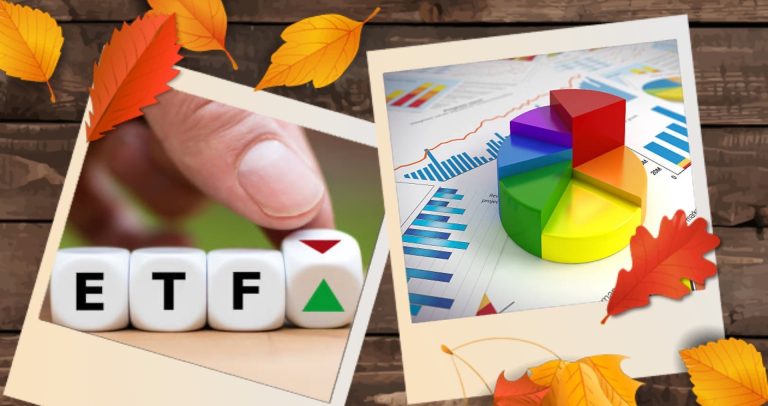Investing in commodities has long been a strategy for diversifying portfolios and hedging against inflation. For traders in the UK, the choice between investing in commodity exchange-traded funds (ETFs) and direct investment in physical commodities or futures contracts can significantly impact their financial outcomes.
Understanding Commodity Investments
Commodities represent raw materials or primary agricultural products that can be bought and sold. They are generally classified into two categories: hard commodities, which include natural resources like oil and gold, and soft commodities, which typically refer to agricultural products such as wheat, corn, and coffee. These assets are crucial in the global economy, impacting various sectors from energy to agriculture.
The commodity market is influenced by a multitude of factors, including geopolitical events, supply and demand dynamics, weather conditions, and economic indicators. Understanding these dynamics is essential for traders looking to capitalize on price movements.
Commodity ETFs
Commodity ETFs are investment funds that track the performance of a specific commodity or a basket of commodities. They can be structured in several ways, primarily focusing on physical commodities or futures contracts.
Advantages of Investing in Commodity ETFs
One of the significant benefits of commodity ETFs is diversification. By investing in a fund, traders can gain exposure to multiple commodities without the need to purchase each one individually. This spreads risk and can mitigate the impact of price fluctuations in any single commodity.
Additionally, commodity ETFs often come with lower fees and expenses compared to direct investments, especially when considering the costs of storage and insurance for physical commodities. The simplicity of trading is another appealing feature; ETFs are easily bought and sold on stock exchanges, similar to regular stocks, making them accessible to a broader range of investors.
Moreover, liquidity is a critical advantage. Commodity ETFs generally have high trading volumes, allowing for quick entry and exit from positions without significantly affecting the price.
Disadvantages of Commodity ETFs
However, commodity ETFs are not without their downsides. One notable issue is tracking error, which occurs when the ETF’s performance does not perfectly match the underlying commodity’s price movement. This discrepancy can stem from management fees, operational costs, and the nature of the ETF’s structure.
Another drawback is the limited exposure to specific commodities. While an ETF can provide diversification, it may not offer the targeted investment in a particular commodity that some traders desire. Additionally, traders need to be aware of market phenomena like contango and backwardation, which can negatively impact the performance of futures-based ETFs. In contango, futures prices are higher than the spot price, leading to potential losses when rolling contracts.
Direct Investment in Commodities
Direct investment in commodities involves purchasing physical assets or engaging in futures contracts. This approach provides a different risk-return profile compared to investing through ETFs.
Advantages of Direct Investment
The primary advantage of direct investment is direct exposure to the price movements of commodities. When a trader purchases gold bullion, for example, they own the asset and benefit directly from any price increases.
Moreover, direct investment can potentially offer higher returns. This is particularly true for traders adept at navigating futures markets, where leveraged positions can amplify gains. Direct investment also serves as a hedge against inflation, as commodities tend to retain value during inflationary periods, protecting purchasing power.
Disadvantages of Direct Investment
On the flip side, direct investment often comes with higher transaction costs. The process of buying, storing, and selling physical commodities can incur significant expenses. For example, storing gold safely requires secure facilities and insurance, adding layers of cost.
Moreover, direct investment can be complex, particularly when dealing with futures and options. Traders must have a strong understanding of market mechanics to manage their positions effectively and mitigate risks.
Strategic Considerations for UK Traders
When deciding between commodity ETFs and direct investment, several strategic considerations come into play.
Factors to Consider
First, traders should evaluate their investment goals and time horizon. For long-term investors seeking simplicity, ETFs may be more suitable. Conversely, active traders looking to capitalize on short-term price movements might prefer direct investment.
Risk tolerance is another critical factor. Direct investment can lead to higher volatility, making it essential for traders to assess how much risk they are willing to take on. Additionally, market conditions and economic factors can impact the performance of commodities and should inform investment decisions.
Tax Implications and Regulatory Considerations
Traders in the UK must also be aware of tax implications associated with both investment methods. Direct investments in commodities may incur capital gains tax upon sale, whereas commodity ETFs often qualify for more favorable tax treatment. Understanding the regulatory environment and tax responsibilities is crucial for traders to optimize their investment strategies.
Conclusion
In conclusion, the choice between commodity ETFs and direct investment hinges on various factors, including individual investment goals, risk tolerance, and market conditions. Both approaches offer unique advantages and disadvantages, and traders must carefully evaluate their circumstances to make informed decisions.
For UK traders looking to explore the dynamic world of commodities, understanding these strategic approaches is vital. Whether opting for the simplicity and diversification of ETFs or the direct exposure of physical investments, each method can play a significant role in a well-rounded trading strategy.
To view more insights and resources about investing in commodities, consider exploring reputable financial platforms and market analysis tools.


